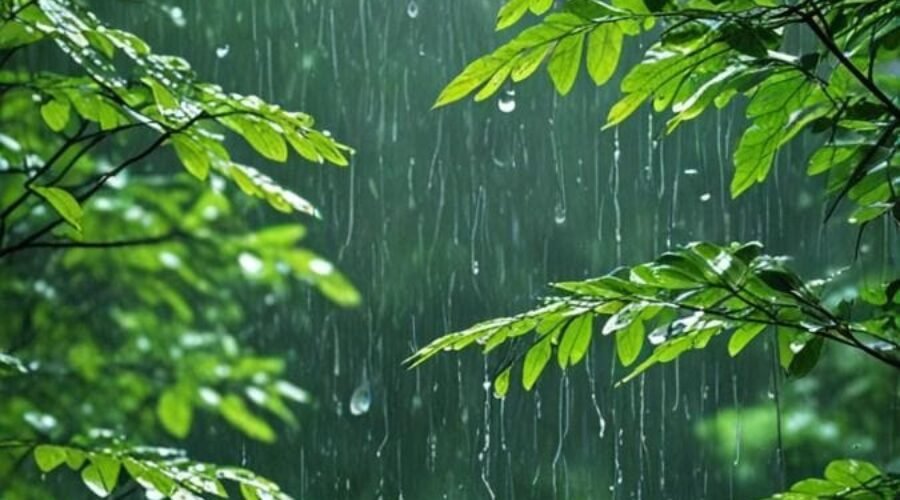Bali Wet Season 2024: Your Ultimate Guide to Visiting During the Rainy Season
Bali is a tropical paradise known for its lush landscapes, vibrant culture, and warm weather. Nestled close to the equator, this Indonesian island experiences two distinct seasons – wet and dry. Understanding the Bali wet season is essential for planning your travel plans. Whether it’s your first time in Bali or a return visit, knowing when to visit can enhance your experience.
Bali Weather: Two Seasons – Wet and Dry

Bali’s tropical climate is defined by its proximity to the equator, which means warm temperatures year-round. The two main seasons in Bali are the dry season (April to October) and the wet season (November to March). During the Bali wet season, rainfall and higher humidity dominate the weather, creating lush landscapes and replenishing rice terraces.
The dry season in Bali, on the other hand, offers little chance of rain, sunny days, and ideal sea conditions. It’s a great time for outdoor activities such as exploring the best beaches, hiking, and water sports.
What Makes Bali’s Tropical Climate Unique?
Bali’s weather patterns are influenced by its position close to the equator, resulting in consistent daylight hours and average temperatures ranging between 26°C to 30°C (78°F to 86°F). The island’s diverse topography—from coastal regions to mountainous interiors—creates microclimates. While the coastal areas experience higher humidity, the upland regions like Ubud and Bedugul are cooler and often misty.
When Is the Best Time to Visit Bali?
Determining the best time to visit Bali depends on what you’re seeking. For those looking for good weather and plenty of outdoor adventures, the dry months are ideal. But if you’re drawn to quieter areas in Bali, lush landscapes, and better prices, the Bali wet season may be perfect for you.
Peak Season vs. Low Season
The high season in Bali aligns with school holidays and the Bali’s dry season, while the low season occurs during the wet season in Bali. Travelers visiting during the low season enjoy fewer crowds, more privacy, and opportunities to immerse themselves in Balinese culture.
Ideal Time Based on Activities
- Dry Season (April to October): Best for beach activities, trekking Mount Batur, exploring temples, and water sports.
- Wet Season (November to March): Ideal for cultural experiences, enjoying waterfalls, and taking part in indoor activities like Balinese cooking classes and spa treatments.
Bali Wet Season: November to March

According to Bali.com, Bali wet season runs from November to March. While this period is marked by frequent rainfall, it also offers unique experiences. Rainy months like December and January bring cooler temperatures, high humidity, and vibrant greenery. Bali wet season is ideal for those who love indoor activities or don’t mind a rainy day while exploring.
What to Expect During the Bali Wet Season
- Rainfall and Humidity: Rain showers often occur in the afternoons or evenings. They’re typically short-lived but can be intense.
- Lush Landscapes: Bali’s rice terraces and waterfalls are at their most stunning during this season.
- Sea Conditions: While the sea may be rougher during monsoon season, water sports like white water rafting are still plenty of fun.
- Quiet Beaches: Some beaches experience less foot traffic, providing a serene setting for relaxation.
Great Time to Visit Bali During the Rainy Season
Contrary to popular belief, the Bali wet season is still a great time to visit. Here’s why:
Fun Indoor Activities and Balinese Culture
- Balinese Cooking Classes: Learn traditional Balinese cooking in Ubud, Seminyak, or Canggu. Many cooking classes are set in beautiful surroundings and provide hands-on experiences, from selecting fresh ingredients to preparing authentic dishes.
- Spa Experiences: Bali is renowned for its world-class spas. Indulge in treatments like Balinese massages, flower baths, and herbal scrubs.
- Nyepi: Experience the unique Balinese Day of Silence, which usually falls in March. It’s a day of reflection, with no flights, no work, and even the streets are silent.
Scenic Wonders
- Waterfalls: Visit breathtaking waterfalls like Tegenungan, Sekumpul, and Gitgit. The rainy season enhances their flow, creating awe-inspiring sights.
- Rice Terraces: Bali’s lush rice terraces, such as Tegalalang and Jatiluwih, thrive during the wet months, offering picturesque views.
- Mountains and Lakes: Areas like Bedugul are perfect for exploring misty temples, serene lakes, and cooler climates.
Areas in Bali to Explore

The wet season brings a different charm to Bali’s famous destinations:
- Ubud: Known for its spiritual vibe, cultural activities, and verdant rice fields. Ubud also offers yoga retreats and wellness centers, perfect for relaxation.
- Canggu: A trendy area with a mix of surf culture, boutique cafes, and vibrant nightlife.
- Kuta: Famous for its bustling streets, shopping, and nightlife.
- Uluwatu: Stunning clifftop views, dramatic sunsets, and iconic temples make this area a must-visit.
- Bedugul: Explore misty mountain landscapes, beautiful lakes, and botanical gardens.
Activities to Do in These Areas
- Ubud: Join art workshops, visit the Sacred Monkey Forest, or explore local markets.
- Canggu: Enjoy beach clubs, take surf lessons, or relax in chic coffee spots.
- Kuta: Try indoor activities like bowling or escape rooms on rainy days.
- Uluwatu: Witness traditional Balinese Kecak fire dances at Uluwatu Temple.
- Bedugul: Take a boat ride on Lake Bratan or visit Ulun Danu Temple.
Tips for Visiting Bali During Bali Wet Season
- Pack Smart: Carry lightweight rain gear, waterproof shoes, and quick-dry clothing.
- Plan Indoor Activities: Make the most of rainy days with Balinese cooking classes, spa visits, and art workshops.
- Embrace the Weather: Rainy days offer unique photo opportunities and a chance to relax.
- Choose the Right Location: Areas like Ubud and Seminyak offer a balance of indoor and outdoor attractions.
- Check Sea Conditions: Always confirm conditions for water sports or ferry rides to nearby islands like Nusa Penida.
Best Beaches and Sea Conditions
The Bali rainy season can affect some beaches due to debris washing up. However, iconic spots like Nusa Dua, Sanur, and Jimbaran often remain clean and accessible.
Water Sports and Activities
While rough sea conditions prevail in some areas, there’s still plenty of fun to be had:
- White Water Rafting: Enjoy thrilling adventures on Bali’s rivers, which swell during the rainy season.
- Snorkeling and Diving: Explore Bali’s underwater world on calm days. Tulamben and Amed are great spots for diving.
- Surfing: Advanced surfers can tackle larger swells during this season.
Why Visit Bali During the Wet Season?
Despite high humidity and frequent rain, the Bali wet season has its perks. Fewer crowds, lush greenery, and cultural immersion make this time of year special. Plus, the rain often clears quickly, leaving plenty of time for exploring.
Is It a Good Time to Travel to Bali?
Absolutely! Bali’s tropical climate ensures there’s always something to enjoy. While the wet season in Bali may not offer perfect sunny days, it provides a unique opportunity to experience the island’s quieter, more serene side.
Frequently Asked Questions
When is Bali’s wet season?
Bali’s wet season runs from November to March, with the wettest months being December and January.
What are the benefits of visiting Bali during the rainy season?
Lower prices, fewer crowds, and lush landscapes are key benefits of traveling during Bali’s rainy season.
Are there still sunny days during the wet season?
Yes, even during the Bali wet season, there are sunny intervals perfect for outdoor activities.
What indoor activities can I do in Bali?
You can join Balinese cooking classes, indulge in spa treatments, or explore art galleries.
Is Bali worth visiting year-round?
Yes, Bali’s tropical charm and diverse attractions make it a perfect destination throughout the year.
Conclusion
The Bali wet season offers a different perspective on this beloved island. From lush rice terraces and majestic waterfalls to cultural experiences like join a cooking classes, there’s no shortage of activities to enjoy. Whether it’s your first time in Bali or a return trip, Bali wet season provides a chance to explore the island’s quieter, greener side.
Plan your trip, embrace the rain, and discover why Bali is the perfect destination year-round. The Bali wet season truly transforms the island into a lush paradise, making it a memorable time to visit. With fewer crowds and a chance to experience Bali at a slower pace, the Bali wet season is an underrated time of year for adventure and relaxation.
Read more: Exploring Ulun Danu Bratan : The Majestic Temple of Ulun Danu Beratan in Bali



